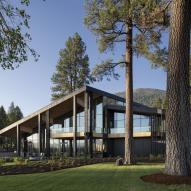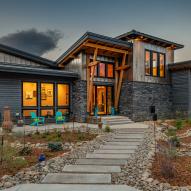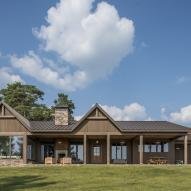Wood in Community Spaces: An Expert Q&A
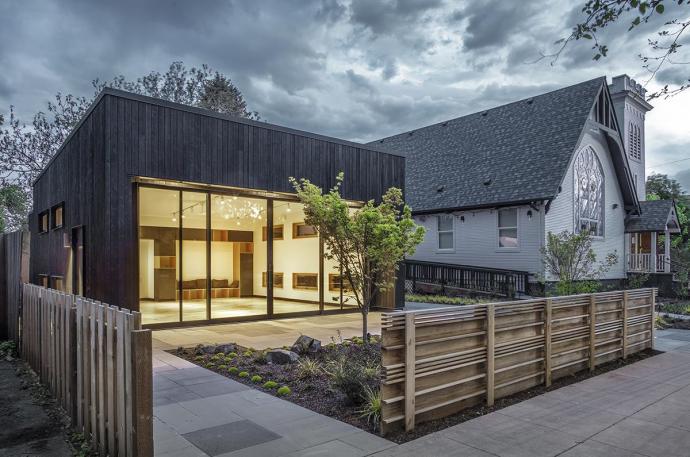
For Brian Weaver and the team at the Portland Playhouse in Portland Oregon, the idea of community carries with it a sense of responsibility. Striving to create an inclusive neighborhood space for people to gather, the not-for-profit theater offers performances, plays, art events, festivals, and more throughout the year.
We caught up with Brian to talk about the Playhouse, its unique design aesthetics, and the importance of providing safe creative spaces where communities can gather, people can exchange ideas, and neighborhoods can thrive.
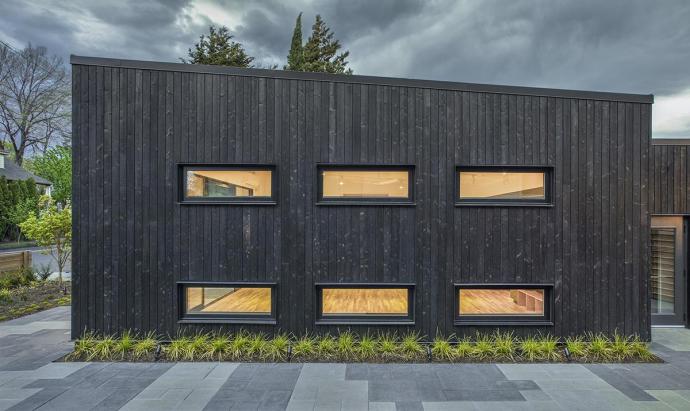
Q: What is your role at the Portland Playhouse, and what is the Playhouse all about?
A: I am one of the three founders of Portland Playhouse, which was founded 14 years ago, and currently I am the artistic director. The Playhouse is all about community and bringing people together to celebrate the complexity of the human experience. We are a professional theater in a vibrant residential neighborhood setting, and our theater is located in a historic 120-year-old community church (though we are not a religiously affiliated organization).
The kind of plays we do are off Broadway stuff. We do a wide variety of nationally celebrated plays with a specific emphasis on work that is based in racial equity & justice and centers black artists.
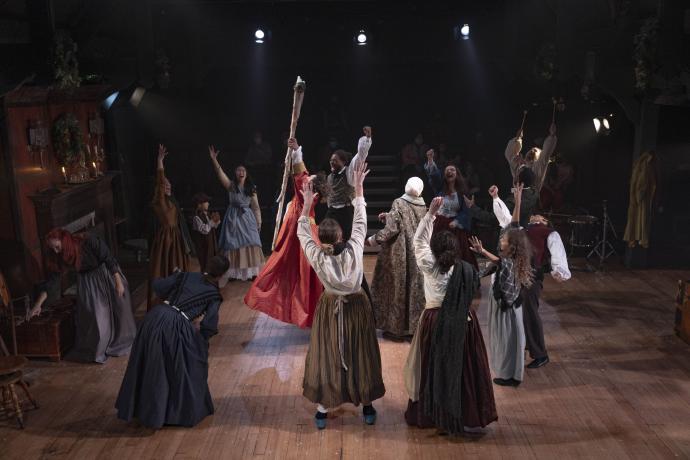
Q: Considering that the Playhouse is located in a former church, what do you think the space offers to the local community now that it has become a theater?
A: I think we ironically provide the same type of thing that actual churches used to do for a community, and in many cases still do, which is we bring people together for common cause. We bring people together to celebrate, to question, to share truths & differences, to learn about each other and elevate the human spirit.
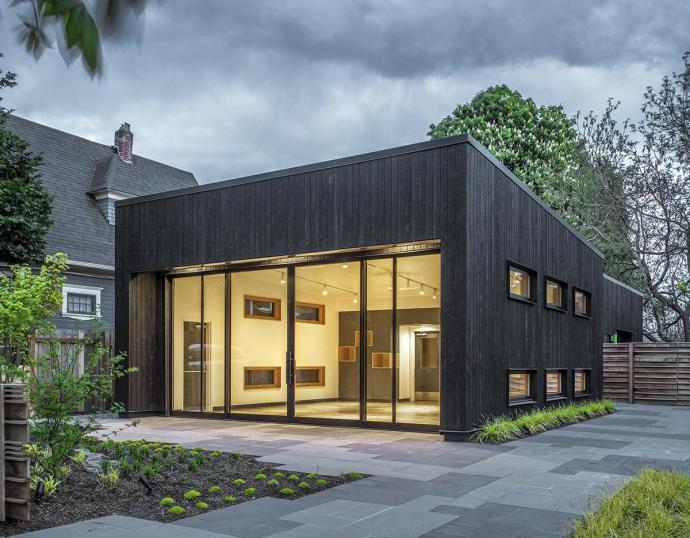
Q: The Playhouse building itself is a turn of the century church with a traditional white exterior, but the adjacent Studio building on the campus is modern and sleek featuring our Pioneer Millworks Shou Sugi Ban Larch in carbon black finish, how did that happen?
A: We were working with an exceptionally hip cutting-edge group of architects when we were designing the theater and studio buildings from SERA Architects. They were donating their services to the project and because of that they gave the opportunity to a group of their younger associates who used a collective design model. It was a team of six architects that came up with the design and I know that they were looking at the 120 year old church structure, which is of course wood, and had decided to keep that building looking classic with a white exterior, and I think the choice of the carbon Shou Sugi Ban siding was to have something similar with a wood exterior, but to take the opportunity to create contrast with a historic building in white and a contemporary building in black, the modern and the classic.
Q: In the Studio space, not only is the exterior clad in natural wood, but that theme is also brought inside of that space as well, was that an intentional choice?
A: Our studio has a red oak floor with a large glass front and lots of interior windows with an array of beautiful fabric acoustic panels on the walls and ceiling. We also saved the original Douglas fir wood floor in the church, which I think is grounding. We sometimes use the spaces as a dance studio, so having a spring wood floor is meaningful to our dancers. I think it helps us feeling at home here in the Pacific Northwest having wood under our feet and around us. I personally have always loved wood and the way it looks, feels, and sounds in a space.
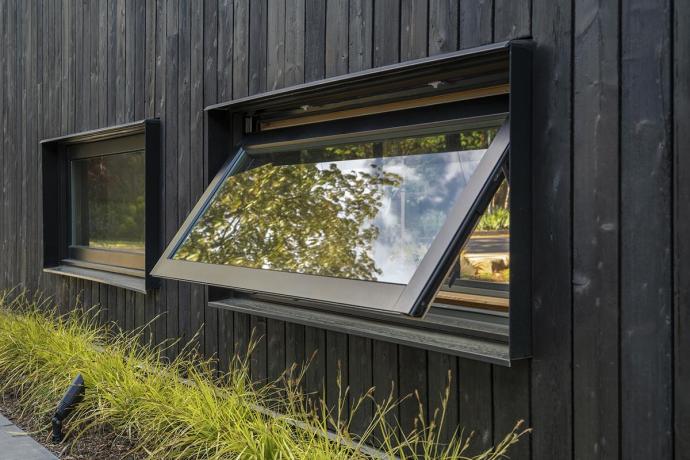
Q: Were the selection of locally sourced/ sustainable materials important to you from a design standpoint?
A: Sustainability was a factor for sure. I remember when we were first making the decision to use an exterior Shou Sugi Ban charred cladding we were looking at another product that was made with an imported Cedar, but when we found Pioneer Millworks Shou Sugi Ban Larch that was locally sourced timbers and made in Oregon we went with that instead. It was a win-win in terms of sustainability and supporting a local business.
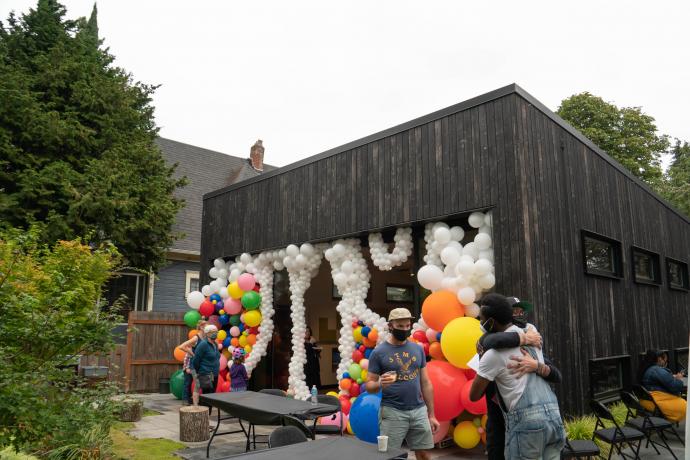
Q: Does using wood and other natural materials as a design element change the experience in a creative/performance community setting like a theater?
A: I think so, yes. As an example, we did an arts festival this past summer featuring over 40 different artists with a mix of visual artists, preforming artists, actors, musicians, and dancers. Much of the event took place in our outdoor courtyard between the theater and studio buildings, and we got tremendous feedback about how warm, inviting, and community centric it all felt. I think there are a lot of factors that led to those feelings, but I also think the design of the two buildings being made of wood were a big part of that, as well as the neighborhood setting of our campus. I think that the wood greatly contributed to a feeling of warmth and engagement that really grounded the event.
There are lots of performance spaces in the world that are made of concrete and glass and metal, and those spaces can have an institutional feel to them, a coldness. That feeling is something artist have to work against because a lot of the work “art” does is to create a feeling of warmth and connection. I can see how having a warm naturally designed surrounding can contribute to creating an environment conducive to those feelings.
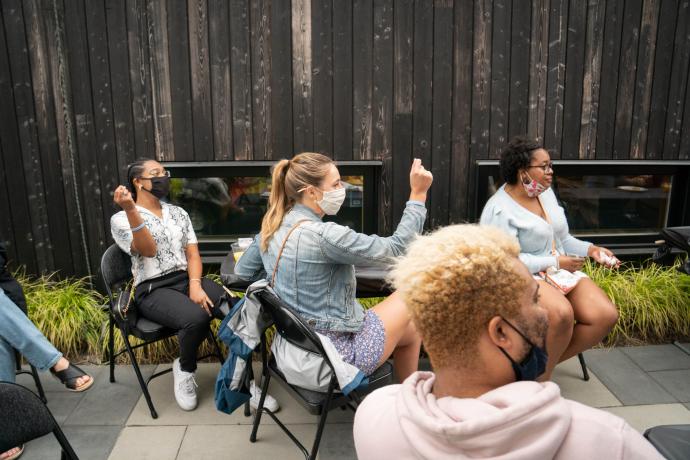
Q: Why is creating a community space where artists can express themselves through creativity and a local audience can experience their performance important?
A: It is important to us because we have to see the world that we want to live in, and artists help us do that. Our human creativity helps us to see the future, and we want to see a future that is more just, where everybody has the same opportunities. I think that a community space brings people out of themselves when they are with other human beings in a space. It forces us out of our bubbles, out of our shells.
I think that is especially important now as we are enduring our second year of Covid, that we are able to come together and share in human warmth and joy and collectively learn about each other. Portland Playhouse works to create a sense of belonging. Everything from the art that we make, to the atmosphere we create physically, to the way that we welcome and greet people, it all is part of a mission to create that sense of belonging and ownership in this neighborhood space, which is intentionally inclusive and celebrates the differences that bring people together.
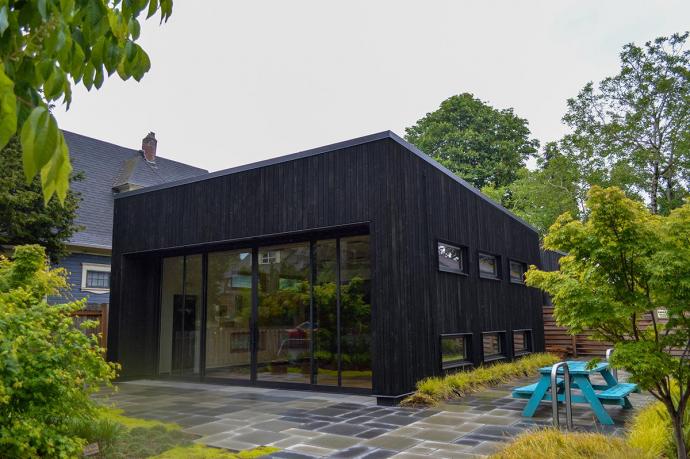
About:
Brian Weaver co-founded Portland Playhouse in 2008 and has directed numerous productions for the theater. Brian loves being a working dad- sharing time between the theatre and parenting his children Margot & Elliette alongside the love of his life, Nikki. When not in Portland, you can find him on any stream, mountain, or forest trail. He also serves on the Board of Outside In, helping homeless youth and other marginalized people move towards improved health and self-sufficiency.
The Portland playhouse is a 501(c)3 nonprofit organization and is located at 602 NE Prescott Street, Portland, OR 97211.
For more information please visit: portlandplayhouse.org


